Authors:
Maria Luce Lupetti, Dave Murray-Rust, Serena Cangiano, Alice Mela
AI is changing the nature of the things that we design, the way we design them, and the futures we might be designing for. As AI becomes increasingly integrated into how products and services function and interact with world, as well as a tool within design processes, designers and creative practitioners urgently need to develop skills to understand, utilize, and critically engage with AI technologies. It is a complex space, where the nature of the materials is changing rapidly, and where conventional metaphors are breaking down—a process made more challenging by the use of the term AI to describe everything from multibillion-parameter reasoning models to smart washing machines. There is a need for literacies that deal with implications of systems and go beyond functionality, as evidenced by the growing number of regulatory initiatives around AI, such as the 2024 EU AI Act. These developments call for a design practice that helps foster both functional and critical literacies around this emerging technology.
Speculative design methodologies have emerged as a particularly valuable practice to invite a deeper understanding of technology as well as its consequences, nourishing critical reflexivity and ultimately encouraging the development of a personal stance and ethical thinking [1]. The wide adoption of speculative design in various domains reaffirms its value, including within HCI research focused on AI explorations in education. There are two broad ways to bring speculative design and AI together: creating practical speculations around the opportunities offered by AI and materializing critical speculations about the consequences of AI. Typically, these approaches are seen as separate, but we see tremendous potential for approaches that bring together critique of and making with AI systems [2].
In this article, we describe a methodological space of speculative AI prototyping, where the making with and the critique of AI are deeply connected in dialogue, supported by a speculative design approach that unpacks futures.
We explored the opportunities and perils of practicing speculative AI prototyping during a summer school at Politecnico di Torino in Italy in 2024. The program was attended by 14 master's students with design and architecture backgrounds and included contributions from an international teaching team.
Our speculative AI prototyping methodology built on two key observations: Generative AI opens up opportunities for creating speculative experiences and artifacts (making with), and experiential engagement with AI is a key practice that enables meaningful thinking about future implications of the technologies (critique), particularly in a space that is ripe for technological enchantment [3]. The program combined playful engagements with GenAI tools, including Stable Diffusion, Teachable Machine, Claude, and others, along with Arduino's new prototyping tool kit Modulino.
We see tremendous potential for approaches that bring together critique of and making with AI systems.
From a speculation-with-technology point of view, we set up short, playful AI exercises that allowed students to get familiar with the technologies at hand, especially in understanding their limits. We directed them toward physical prototyping as a practice that both helps us better understand the technology and creates artifacts that engage publics in designers' critiques. The practice of clarifying complexity into precisely targeted, reduced forms gives space to convey the intricacies of our interactions with technology.
The impact of technology was heightened through an unconventional activity: a visit to the ethnographic museum of Cesare Lombroso, the famous Italian phrenologist, drawing a parallel between the historical pseudoscientific practices and current uses of AI technologies. Lombroso's work contributed to persistent misconceptions in both medical and public perceptions of health conditions and their physical implications, such as falsely suggesting a correlation between epilepsy and crime. In a similar vein, AI technologies have recently been adopted in preventive forensic screenings in healthcare, criminal justice, and finance, even though there is no data proving their efficacy [4]. Additionally, the idea of AI as an objective decision maker has been widely critiqued [5]. The museum visit helped students thoughtfully engage with the possible practical consequences of AI use, in contrast to frontal lectures that explain ways in which AI could be ethically questionable.
Lombroso's experience confronted students with the difference between the instruments we use for measuring and the meaning we attribute to those measures, conveying the critique that algorithms embed belief systems and that those belief systems can have tragic consequences. There are questions that we still need to explore, though: How can we move from knowledge about such dangerous paths to generative and meaningful engagements with AI? How do we move from the critique to tangible explorations of AI speculations?
To take a step back from the situated and narrow critiques of AI and measurement, and abstract them into principles, we presented students with a set of cards, each printed with words such as beauty, purity, goodness, smartness, "Italianness," and more. The students unpacked the multifaceted ways we can look at each ideal and translate them into prototypes.
Italianness led to a discussion of identity and culture, a reflection on who should be valued in society and on what ground; purity encouraged reflection on how AI systems use inappropriate means to measure trustworthiness and treat them as objective; smartness was appropriated to materialize a reflection on how intelligent algorithms can emotionally manipulate us through the promise of helping us achieve our better selves.
It could be argued that these discussions only needed the deck of cards. What did physical and digital prototyping add to such speculations? Was it worth it?
Working with tangible components was a powerful way to both understand and convey the intricacies of our interactions with technologies. In the Italianometer, the slowness and bugginess of the touch interface, combined with the redundancy of the human presence, conveyed the satirical yet relatable reality of bureaucratic processes in which people are subjected to surreal assessment processes. The VerifAI hand scanner made explicit the inconsistency between what one declares and what machines read as a measure of trustworthiness. There was also a practical value in prototyping with AI. For example, Moody the Smart Mirror, which critiqued emotionally manipulative AI avatars, was developed as a fully functioning prototype only due to the coding speed enabled by the use of Claude. The various projects put an emphasis on the belief we hold about AI objectivity and made tangible the controversies that this belief can lead to. The practice of getting students to create bias helped them reflect and understand in a way that is different from treating bias as an abstract moral concern. When the systems didn't achieve what the students hoped, it gave them a stronger understanding of the issues that people who use badly designed decision-making systems face.
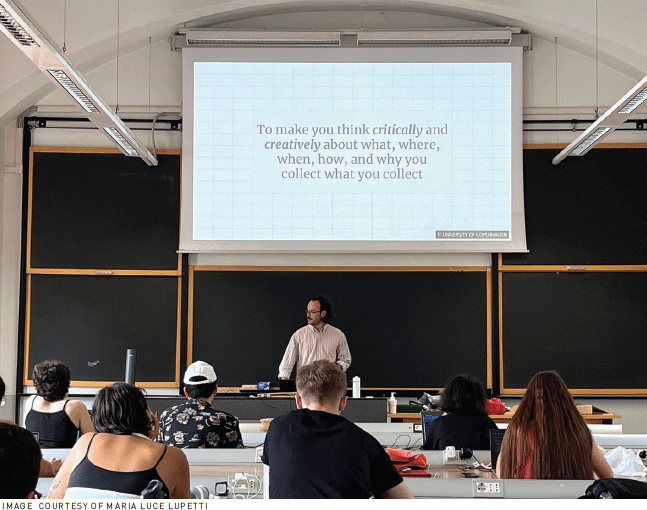 | Willem van der Maden introduces the topic of translating human experience into observable metrics for AI during the speculative AI prototyping summer school. |
There were also questions that we are still thinking through. When speculative artifacts need to be sketched rather than implemented, it leaves space for the imagination. When AI systems can quickly mock up speculative interfaces and interactions, it can feel like some of the magic has been lost—it becomes more a first version of a poor system than a provocation for thinking. Similarly, some of the work crafting high-fidelity prototypes leads to a deeper, longer engagement with the criticalities of the work and adds richness to the imagined world. How can we make sure that the fluidity of prototyping with AI systems leads to deeper, more resonant critique rather than higher fidelities without the accompanying intellectual rigor?
 | Left: A craniograph. Right: Types of murderers, as classified by Cesare Lombroso. Images from Lombroso's book Criminal Man. |
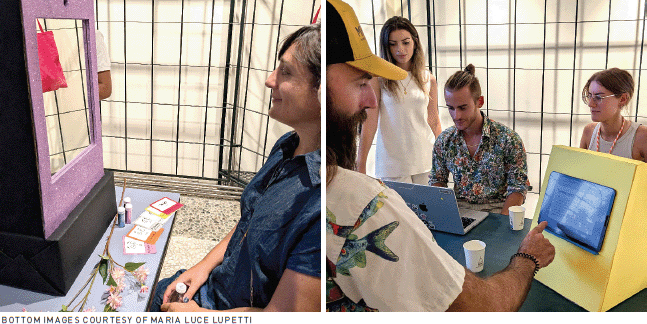 | Left: Moody the Smart Mirror by Shadi Masihipour, Kosar Mohammadi, and Meng Shisen. Right: The Italianometer by Davide Colletti, Marta Piatti, Matteo Dell'Agostino, and Fiona Hajredini. |
Speculative AI prototyping is a methodology that holds great potential for nurturing AI literacy that allows people to gain technical knowledge of AI functioning, as well as a conceptual understanding of the consequences that these technologies may have in society. The physical prototyping element of these speculations allows us, as designers, and the public to experience those consequences. This work is not trivial and, next to supporting the students in making use of the technical possibilities, we had to guide them through a process of shifting their mindsets from problem-solving toward a critical depth that could be expressed through vibrancy, humor, and engagement.
Speculative AI prototyping was promoted by the Department of Architecture and Design at Politecnico di Torino, under the Didattica Innovativa program, and run in collaboration with Arduino Education.
1. Lin, L. and Long, D. Generative AI futures: A speculative design exploration. Proc. of the 15th Conference on Creativity and Cognition. ACM, 2023, 380–383.
2. Murray-Rust, D., Lupetti, M.L., Nicenboim, I., and Van der Hoog, W. Grasping AI: Experiential exercises for designers. AI & Society 39, 6 (2023), 2891–2911.
3. Lupetti, M.L. and Murray-Rust, D. (Un) making AI magic: A design taxonomy. Proc. of the 2024 CHI Conference on Human Factors in Computing Systems. ACM, 2024, Article 1, 1–21.
4. Stinson, C. Algorithms associating appearance and criminality have a dark past. Aeon, May 15, 2020; http://bit.ly/3H1TcjW
5. O'Neil, C. Weapons of Math Destruction: How Big Data Increases Inequality and Threatens Democracy. Crown Publishers, 2016.
Maria Luce Lupetti is an assistant professor in interaction and critical design in the Department of Architecture and Design at Politecnico di Torino. Her research, at the intersection of design, ethics, AI and robotics, is focused on promoting critical perspectives in technology development. [email protected]
Dave Murray-Rust is an associate professor at TU Delft working in human-algorithm interaction that explores the messy terrain between people, data, and things through a combination of making and thinking. The core of his work is relational prototyping: finding ways to explore and make vivid the relationships formed through and around technology to build better futures. [email protected]
Serena Cangiano is founder and head of the Digital Fabrication and Open Innovation Laboratory at the University of Applied Sciences and Arts of Southern Switzerland. Her work centers on multimodal experimental practices to drive transformative processes in education, research, and technology innovation. [email protected]
With a background in interaction and industrial design, Alice Mela leads the product experience team at Arduino. Prior to this, she designed and managed interactive products, spaces, and installations for international clients and events, while always collaborating with educational institutions across Europe. [email protected]
Copyright 2025 held by owners/authors
The Digital Library is published by the Association for Computing Machinery. Copyright © 2025 ACM, Inc.
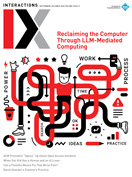
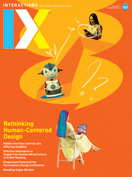
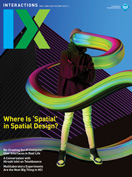

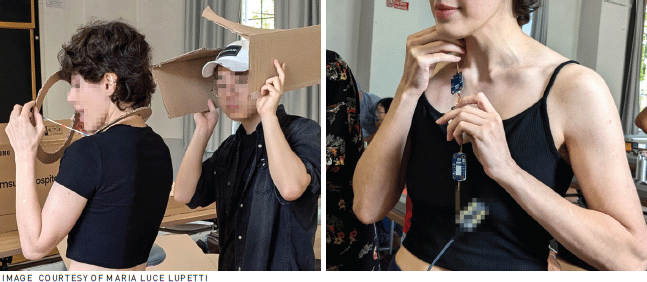



Post Comment
No Comments Found